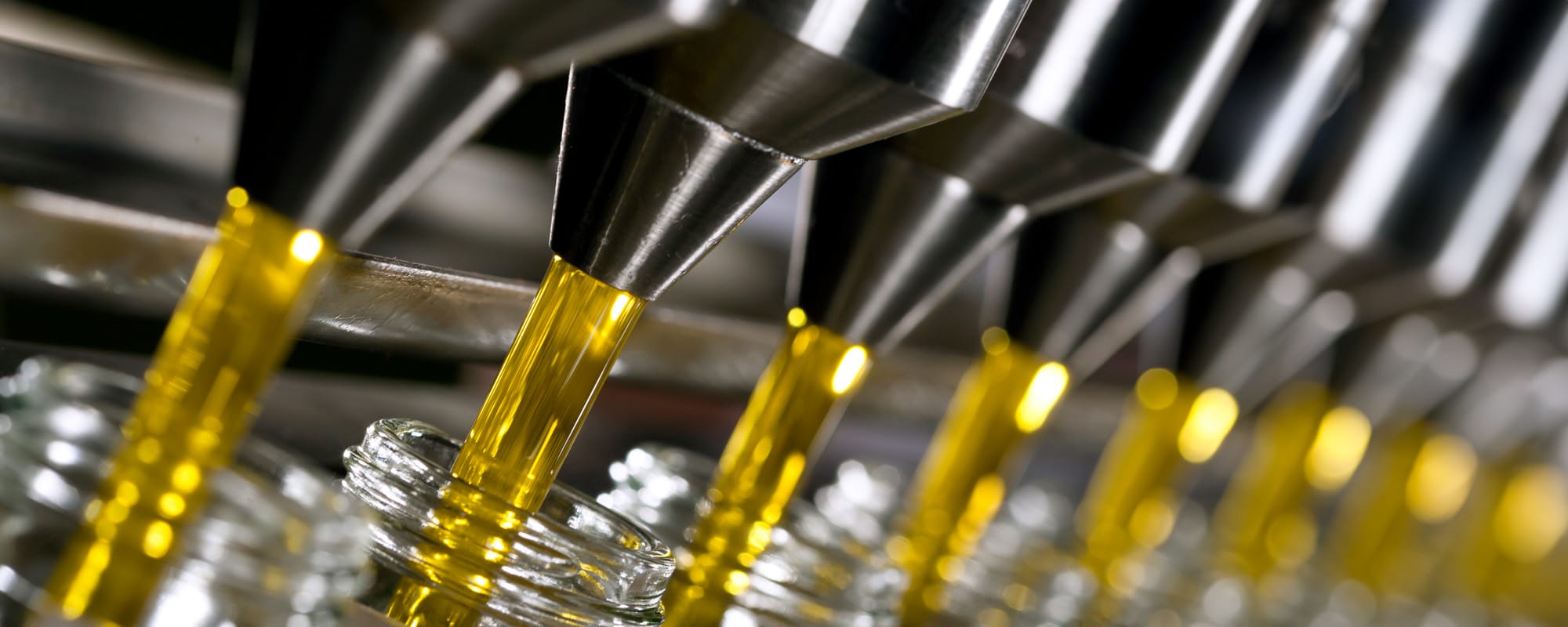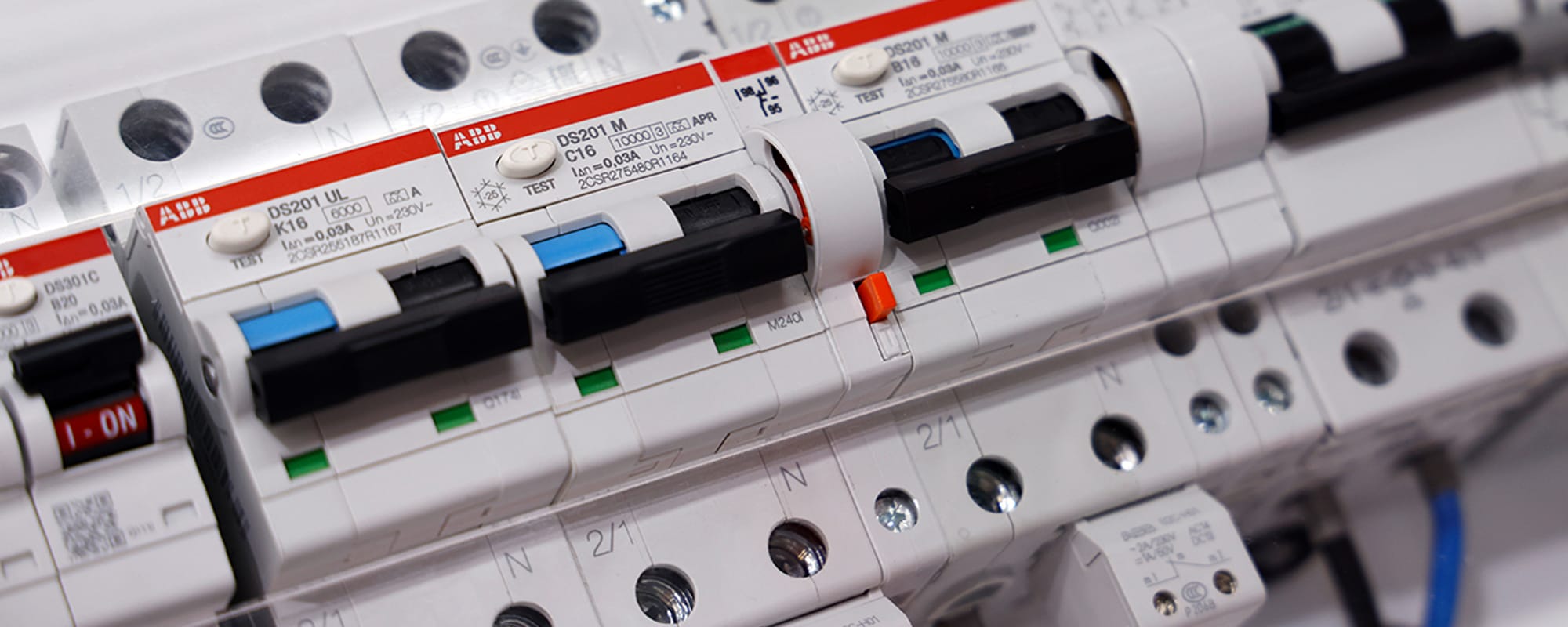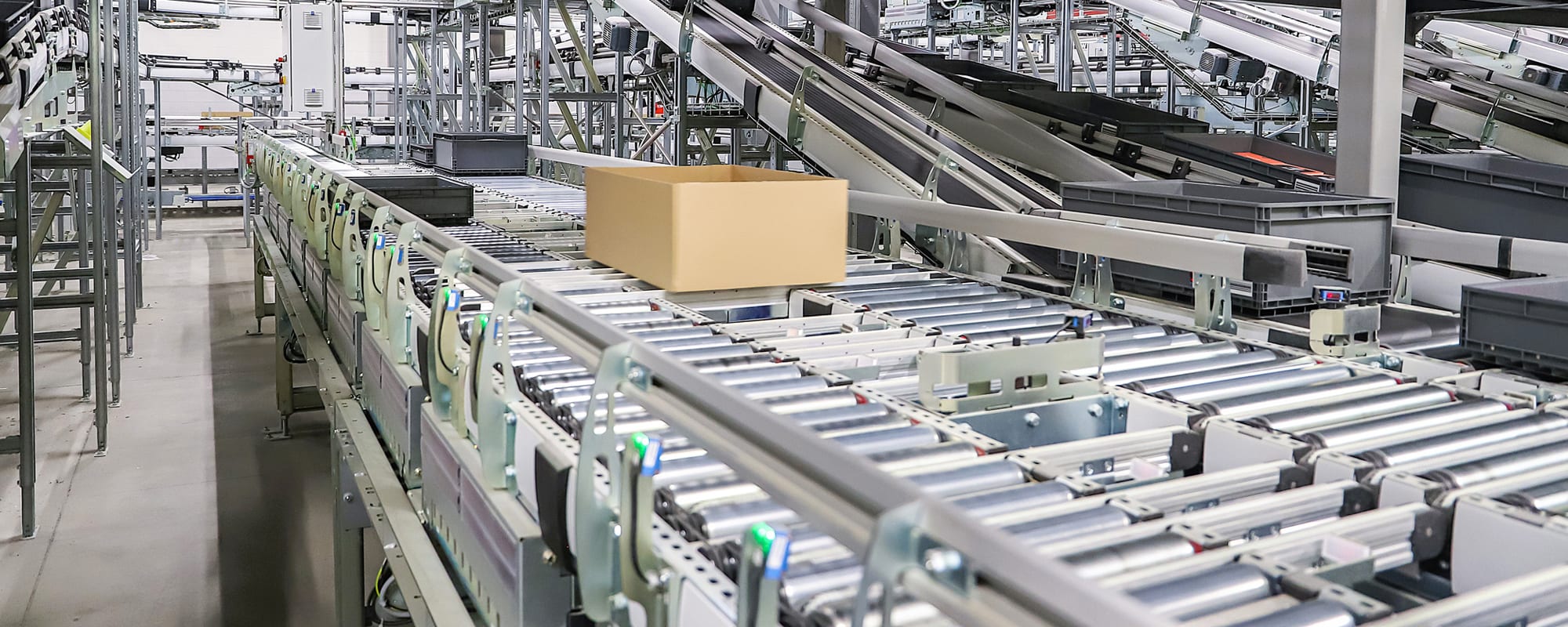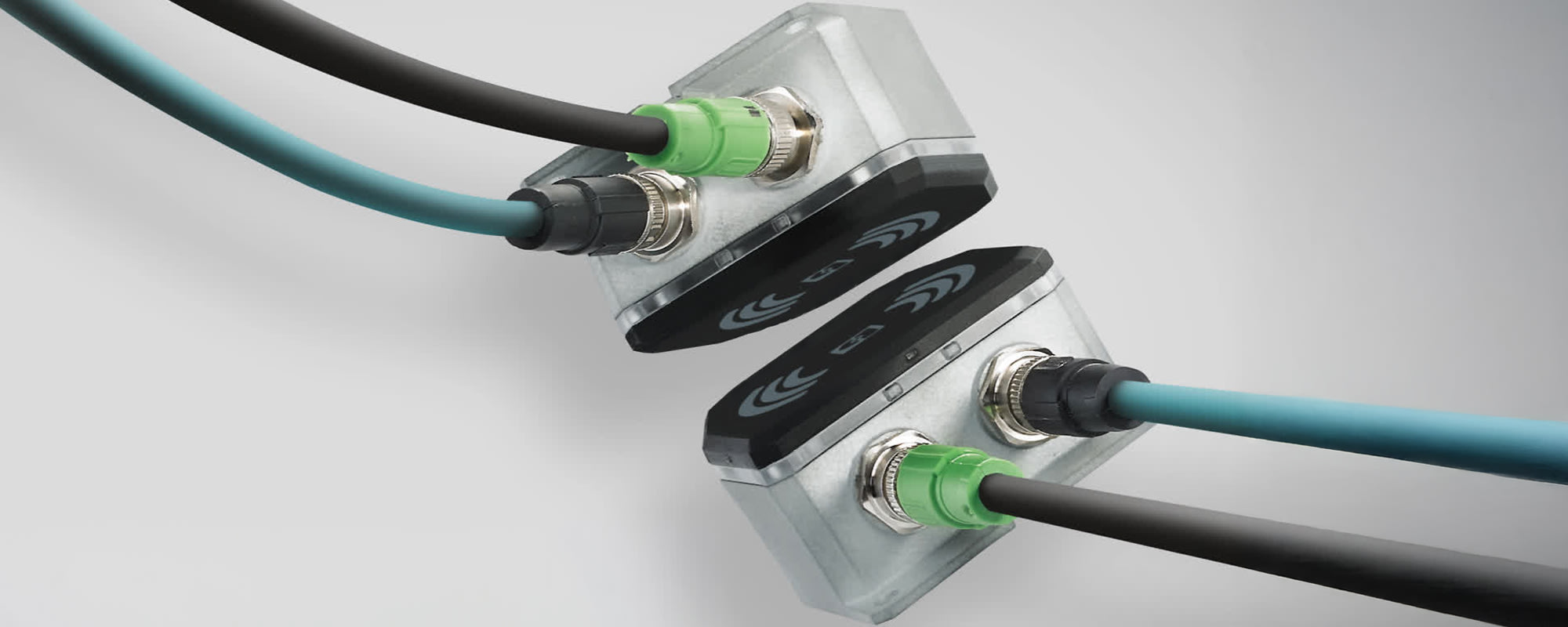Directional control valves are essential components of fluid power applications and are surging in demand as industries shift to more efficient and sustainable practices. Selecting valves ideally suited to specific application environments and requirements is critical to achieving effective outcomes, and these common components are available in a dizzying array of configurations. So, we spoke to Bradlee Dittmer, Pneumatic Technical Product Manager at IMI Norgren, who demystified the options by delving into the various types, functions, applications, and selection criteria.
Bradlee Dittmer, Pneumatic Technical Product Manager at IMI Norgren
Directional control valves are essential to many industrial operations, and demand is only growing. According to a report by Skyquest, the control valve market is expected to grow from its 2023 valuation of $7.13 billion to $12.44 billion by 2031. Understanding these valves and how to apply them is essential in optimizing system performance and ensuring operational efficiency in the years to come. To learn how directional control valves are enabling fluid power applications in applications extending throughout the industrial automation, material handling, railway, commercial vehicle, energy, process control, and life sciences industries, we spoke to Bradlee Dittmer of IMI Norgren, who delved into the various types, functions, and applications of directional control valves and shared some best practices for valve selection.
Q1. Hi Bradlee. Please introduce yourself.

Hi there. I’m Bradlee Dittmer, a pneumatic technical product manager here at IMI Norgren. I was first inspired to become an engineer by my dad, who was an electrical engineer and worked for an aircraft company. I aligned with his interests growing up. He grew up on a farm in North Dakota that I grew up visiting, and we had a lot of do-it-yourself projects around the farm; so, I got interested in how things work — like how to take things apart and put them back together.
I went to the University of Colorado, where I graduated with a degree in Mechanical Engineering in 1996. I didn’t know much about the fluid power industry when I graduated, but I had a friend from college who had a job here at IMI Norgren, so I started here too and ended up making it my career. I’ve currently been with IMI Norgren for 28 years. During that time, I’ve had several different roles and have been certified as a fluid power pneumatic specialist and an AIRMaster+ specialist. I was first hired by the customer service group but have since held a variety of other positions, including application engineering, business development, compressed air specialist, and product marketing manager roles. Now I’m serving as a technical manager for directional
control valves. In this role, I manage the products through their entire product life cycle from birth to grave, participate in new product development, and help to maintain our current product lines and leverage these products to solve customer challenges. I also look for products or options that no longer meet market requirements and obsolete them.
Q2. Please also introduce us to Norgren.
IMI Norgren has a broad range of high-quality pneumatic, electric, and fluid control products, including actuators, preparation pressure switches, fittings, and valves. Whether you’re designing a new machine, looking to upgrade a process, or looking for spare parts, IMI Norgren has the expertise to overcome any pneumatic and fluid control challenge.
Q3. You joined us today to talk about directional control valves. What are valves, and what types of roles do they play in industrial automation applications?
Valves are devices used to regulate, direct, or control the flow of fluids, including both liquids and gasses, by opening, closing, or partially obstructing various passageways.
When considering valves, the directional descriptor is pretty important, as it explains that you’re using the valve to control the flow or the direction of the compressed air flowing within your application. For example, perhaps you’re using the valve to control the air to a pneumatic actuator to have it extend or retract. You could also direct the air to a pilot valve to extend or retract an actuator, control a pneumatic gripper (making it open and close), or operate a Venturi vacuum pump and create a vacuum.
Directional control valves are mainly designed for controlling the direction or flow path of compressed air, so the motion is the most important aspect. When you consider fluid control, however, the fluid itself is the most important part of the application and you’re usually doing rate control or turning fluids on and off.
There are also many different styles of directional control valves, from inline and direct ported to sub-base and manifold mounted, and they can be controlled by manually or mechanically, using air, solenoids, or a combination of both.
Typical applications for control valves are incredibly diverse and mostly depend on how clever the design engineer is. They can be used to clamp something, like a workpiece, or to open a door or a gate. Directional control valves can also push material through a vessel or be used on a conveyor system to redirect where products go in a factory. They’re commonly used in mobile pneumatics applications, like lift axles or kneeling systems on buses or trucks, and in food and beverage applications, including cooking ovens, vents for smoked foods, crimping and cutting sausages, and pressing cheese, just to name a few.
Q4. Talk to us about inline and manifold valves.
Inline and manifold valves are some of the most common valves on the market. Inline valves are directly incorporated into the pneumatic lines of an application — mounted in-line with the compressed air line. Manifold valves sit on a base that you plumb with inlet and exhaust air to enable the easy replacement of the valves without have to disturb the pneumatic plumbing. Inline and manifold valves both feature an internal spool that moves back and forth inside the valve body and directs the air flow inside the valve. As the spool slides, valve ports open or close to allow the air to flow correctly. And it’s important to note that the port footprint of each manifold valve must be compatible with the manifold for the valve to mount and work properly.
Several types of inline and manifold valves are differentiated based on the type of spool they incorporate and their intended applications. For instance, soft-seal spool valves have a seal made of soft material fixed to the spool within the valve, which moves back and forth within the valve body. This design allows for even wear of the seal and has a wiper effect that removes small amounts of debris. Glandless or spool-and-sleeve valves have a match spool and sleeve that can be machined within two microns of each other, achieving a tight fit that allows the spool to slide back and forth on an air bearing as well as an extremely long service life. Soft-seal spool valves generally accommodate higher flow rates and experience less leakage than glandless or spool-and-sleeve valves, but glandless valves usually have a longer lifetime than soft-seal valves.
Directional control valves can typically be found in 2/2, 3/2, 5/2, or 5/3 configurations. The 2/2 and 3/2 valves are often referred to as normally closed or normally open, depending on where the spring and the default position of the valves are when not operated. A 3/2 normally closed valve blocks airflow in its resting position, and the opposite is true for normally open valves. Applications are extremely diverse for each of these valves, but they’re typically used to pilot other downstream components, like a single-acting actuator or a 2/2 fluid control valve.
Q5. Since there’s a wide variety of inline and manifold valves, what are some key system and solution characteristics to consider before making a selection?
When you’re trying to decide which type of inline or manifold valve to buy, you’ll want to identify the flow rate your application requires. Consider what the valve will be controlling and the flow requirement for the application. Once you understand the flow required, this will direct you to the port size needed to provide the required flow. This selection is typically dictated by the pneumatic actuator’s speed, force, and weight.
Another critical consideration is the type of function. You’ll want to account for how the actuator needs to move. Depending on your selection of a pneumatic actuator or cylinder, valves are offer functions like 3/2, 5/2, or 5/3. The first digit represents the number of ports, while the second digit represents the number of positions. 3/2 valves come as 3/2, 3/2 NC (normally closed), and 3/2 NO (normally open), depending on whether they have a spring return, and these variants determine which function the valve will have. 3/2NC valves are the most popular, especially in piloting or single-acting actuators. 5/2 and 5/3 valves are used almost exclusively on double-acting actuators. 5/2 valves are either single- or double-operated. With single-operated valves, you send and hold the signal to extend the actuator and then remove the signal to retract it. On a double-actuated valve, you send one signal to extend the cylinder and then another signal to retract it. 5/3 valves come standard with three different center positions: 5/3 APB (all ports blocked), 5/3 COE (cylinder open to exhaust) or 5/3 COP (cylinder open to pressure). This added center position allows for more complex circuits and, depending on your circuit design, can allow for safer designs, especially when incorporating the 5/3 COE valves.
Other things to consider are the pressure and temperature range, whether the valve will be controlled by a solenoid, air pilot, or mechanical device, and which mounting style best suits your application (e.g., inline/direct-ported, or sub-based).
Q6. Let’s move on to manual and mechanical valves. How are they similar to and different from inline and manifold valves?
There are several critical differences between manual and mechanical operating styles when considering inline and manifold valves. While inline and manifold valves are differentiated by their construction and porting, manual and mechanical valves are slightly different. You can have manual and mechanical valves in both an inline and a manifold version. Manual valves require you to physically operate the valve, typically with your hand or foot, while mechanical valves are actuated by a mechanical device.
Let’s use a conveyor system as an example. You might have a moving box that hits a manual operator, like a roller, and activates a directional control valve that tells the conveyor system to change direction based on the box’s position and its required destination.
Other applications for manual and mechanical valves include gate and door controls. For instance, if your facility is segregated, you could use a manual or mechanical valve to open and close doors and gates.
Compressors equipped with directional control valves are often used to provide access and security in applications with large doors, like garages, trailers, and loading docks. In addition, some clamping-type applications require manual or mechanical valves. For example, in metal stamping applications, you might see a manual valve with a two-hand tie-down that allows operators to keep their hands in a safe position while actuating the two mechanical valves.
Q7. What types of system and solution characteristics should customers be sure to consider when selecting manual or mechanical valves?
When thinking about manual and mechanical valves, be mindful of the space the valve will operate in. Trends towards electrification and space savings might mean you need a smaller product that can operate in limited space — like a small lever or toggle. You should also make sure that the valve material is suitable for the application environment. For example, if your application has a moist or humid environment, consider a stainless steel valve so it won’t rust. Another thing to consider is how operators will interact with the valve. Depending on the application, you might need a push-to-release valve, a lever, or an actuating foot pedal to operate the valve. For example, I recently took my kids to a custom stuffed animal store that uses one of our manual mechanical foot pedals to fill the stuffed animals.
Q8. What’s unique about Norgren’s selection of inline, manifold, manual, and mechanical valves?
Norgren has almost 100 years of R&D experience and is internationally known for providing high-quality motion and fluid control products. We have a wide breadth of both inline and manual mechanical products. We offer 3/2, 5/2, and 5/3 valves with input port sizes extending from a #10–32 port to a 2” port and valve flow coefficient (Cv) values spanning 0.1 to 49 to satisfy an extensive range of flow requirements. Norgren products are also engineered to handle very high flows with ease, and we create our vast array of products with the most challenging applications in mind so you’re sure to find a solution that your needs.
Q9. Can you introduce us to a few of Norgren’s popular inline and manifold valves?
Our V60 Series and V61 Series solenoid- and pilot-actuated spool valves are two of our most popular inline (direct-ported) valve products. V60 valves come in 3/2, 5/2, and 5/3 versions with a 1/8” port while V61 valves have a 1/4” input port and come in 3/2, 5/2, and 5/3 versions. Both series can be actuated using solenoids or air pilots, and their static, soft-seal spool design delivers extremely long lifetime performance because the seal is static within the body, enabling even wear. They are also capable of a very high flow rate for their size. For example, V60 Series valves can handle a Cv of 0.75, while V61 Series valves sport a Cv of 1.3 — both significant flow ratios. In addition, although they’re both inline/direct ported valves, V60 and V61 Series valves can be mounted to a fixed-length manifold to consolidate the pressure and exhaust ports. You’d still have to plumb to the work or cylinder ports, but the fact that these can operate in a two- and three-station segment that can be bolted together to achieve any length between two and 20 stations is very unique. They also have the profile for a DIN rail extruded right into the base, which creates a great segue between a direct-ported valve and a sub-base and allows you to glean the benefits of both a sub-base and an inline/direct-ported valve.

Our Nugget 200 Series is very popular as well. These high-quality and high-reliability inline spool valves have been on the market for almost 40 years. They’re field-repairable and replaceable and available with an internal or external pilot supply to maximize operational efficiency, which is especially valuable in applications where they could encounter pressures below their normal operating pressure. Nugget 200 Series spool valves have aluminum bodies and anodized aluminum spools, offer 3/2, 5/2, and 5/3 configurations equipped with 1/4″, 3/8”, and 1/2” ports, and deliver Cv values of 1.6 (Ports #1–2) and 1.7 (Ports #3–4). We also offer them with manual and mechanical operation.

Q10. Please also introduce us to a few of Norgren’s popular manual and mechanical valves.
Our NV11 Series 2/2 and 3/2 mini manual valves, NV300 Series 2/2 and 3/2 mini manual valves, and NV400 Series 3/2 mini manual valves are some of our smallest products. Designed for use in confined spaces, the NV11, NV300, and NV400 Series manual valves have #10-32 and 1/8” ports, and the NV11 Series is available with a 1/4” push-in fitting (PIF) port as well. They’re also available in six different materials for broad application suitability. Stainless steel variants, for example, are ideal for humid and corrosive environments. Other options include anodized aluminum, brass, electroless nickel, acetal, nylon, and Buna-N. In addition, all three offer the choice of toggle or pushbutton activation, are inline- or panel-mountable and equipped with swivel input ports for easy installation, and have a reduced poppet design for an exceptional product life and a closed crossover design. Applications include but are certainly not limited to tabletop-type assemblies, assembly stations, and test fixtures, as each of these series has a single design origin but offers over 200 configurations to satisfy the needs of almost any fluid control application.

Trust Norgren and RS for Reliable Directional Control Valves Optimized for Your System
Norgren is a leading global supplier of versatile and reliable motion control, pneumatic, and fluid control products optimized for use in the industrial automation, material handling, rail, commercial vehicle, energy, process control, and life sciences industries, including valves, air preparation and treatment products, pneumatic actuators, vacuum products, pneumatic and hydraulic fittings, and pneumatic actuator accessories — all of which and more are readily available at RS.
For more information about Norgren’s pneumatic and fluid control solutions, please visit the links embedded here. For assistance identifying, procuring, installing, and maintaining Norgren directional control valves optimized to satisfy your system requirements, please contact your local RS representative at 1.866.433.5722 or reach out to the RS technical support team.







